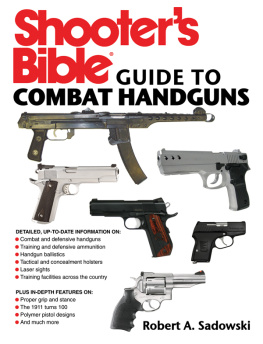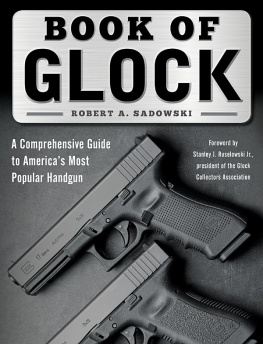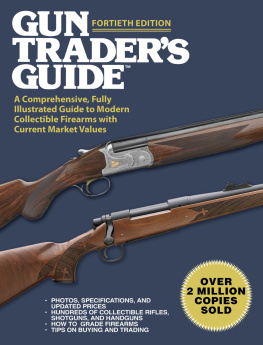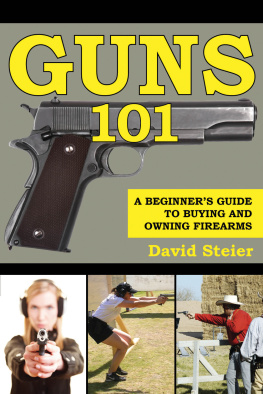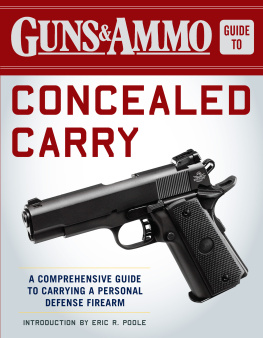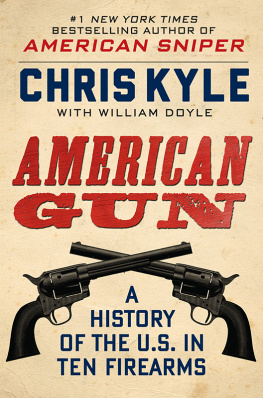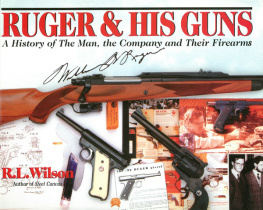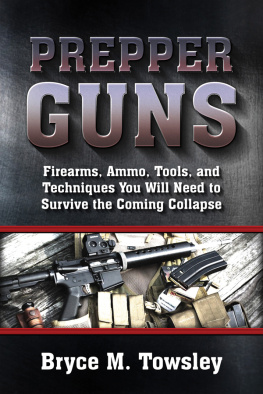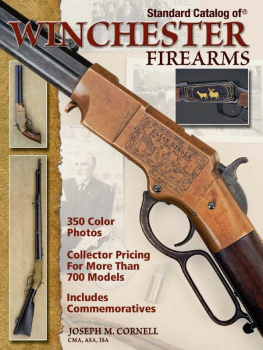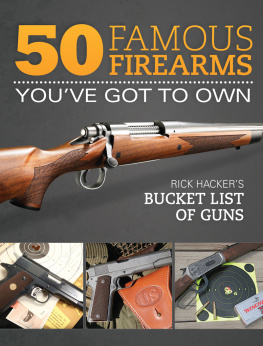Copyright 2015 by Robert A. Sadowski
All rights reserved. No part of this book may be reproduced in any manner without the express written consent of the publisher, except in the case of brief excerpts in critical reviews or articles. All inquiries should be addressed to Skyhorse Publishing, 307 West 36th Street, 11th Floor, New York, NY 10018.
Skyhorse Publishing books may be purchased in bulk at special discounts for sales promotion, corporate gifts, fund-raising, or educational purposes. Special editions can also be created to specifications. For details, contact the Special Sales Department, Skyhorse Publishing, 307 West 36th Street, 11th Floor, New York, NY 10018 or .
Skyhorse and Skyhorse Publishing are registered trademarks of Skyhorse Publishing, Inc., a Delaware corporation.
Visit our website at www.skyhorsepublishing.com.
10 9 8 7 6 5 4 3 2 1
Library of Congress Cataloging-in-Publication Data is available on file.
Cover design by Richard Rossiter
Print ISBN: 978-1-63450-445-4
Ebook ISBN: 978-1-63450-463-8
Printed in China
Table of Contents
Introduction
P icking the fifty best, most iconic firearms is no easy task. There were some obvious choices, like the Winchester Model 1873 lever-action rifle and the Mossberg 500 pump-action shotgun as well as the Ruger Mark I semiautomatic rimfire pistolguns that have indelibly changed the way we hunt, shoot competitively, and defend ourselves. Other selections may send you into fits of fury or have you sit back in contentment. Including firearms that everyone could purchase and owndepending on the thickness of your wallet, or lack thereofwas important. Not all of these guns are favorites of mine, but they made the list due to what their design brought to the shooting community and their influence on future firearm designs. Pop culture has had an influence on guns, though notoriety is not a substitute for performance. Production runs are a good indicator of a firearms popularity and durability, and I figured that into my highly unscientific equations. With no apologies, here are fifty guns that changed the world.
NINETEENTH CENTURY
Parker Brothers VH Grade
The Old Reliable
Produced: 18661934 (Remington 19341942)
The Parker brothersWilbur, Dexter, and Charleswere not that jazzed about their dads early manufacturing business. Their father, Charles Parker, operated a small shop that manufactured a variety of goods such as coffee mills, doorknockers, waffle irons, door hinges, and numerous other items. The brothers were more interested in what dad started producing later on. Charles Parker was a crafty businessman and partnered with a number of other investors. At the beginning of the Civil War Parker and his partners won contracts from the Union Army to produce thousands of rifles. After the war Parker became the sole owner of the Meriden Manufacturing Company and the first shotguns produced with the Parker name were roll marked Made by the Meriden Manf Co. for Charles Parker and are known as the T-latch or back-action guns, as well as Dollar Grade guns. At the time Parker did not have a grading system in place, so later collectors rated the guns on how many dollars a customer had to spend (which determined the level of embellishments). By the time his sons were working with him, Parker shotguns had established a name for quality, handcrafted work manufactured in Meriden, Connecticut. Czars, movie stars, leaders in industry, United States presidents, and generals owned Parker shotguns. The gilded age of side-by-side shotguns was from about 1888 through the 1930s, and Parker shotguns quickly made a name for themselves among the numerous American-made side-by-sides of the time. Gun manufacturing flourished in the Connecticut River Valley, similar to the role Silicon Valley played in computer and software development. Parkers, and all guns of this era, were hand-built from machined parts. Buyers could order a gun made to their specificationsgauge, barrel lengths, triggers, frame size, barrel rib, wood, and engraving were only limited by a customers budget. Duck hunters to trapshooters to those upland hunters chasing grouse or coveys of quails, they all had a Parker made to order. To this day Parkers are coveted by collectors; many are not just kept in gun safes but are refurbished and used for clay shooting and hunting.
Side-by-side shotguns may seem as relevant in the twenty-first century as buggy whips, but these firearms played an important role in our western expansion after the Civil War as well as with hunters and sportsmen up until the 1930s. Back then the side-by-side shotgun was humble and could be had for a songor a kings ransom. The side-by-side was in nearly every wagon hauling westward, and it was used to collect meat for the pot and protect the homestead. Other side-by-side manufacturers in Connecticut and elsewhere in the north were churning out shotguns, but none would be as mythical as Parker. As society had more free time and industry churned, men from places like New York City would board trains heading north to Connecticut, Rhode Island, and elsewhere in New England or out on Long Island for a little gunning. With them was a leather-cased shotgun, and many times the gun was a Parker. The Parker was nicknamed The Old Reliable.
The epitome of Parker craftsmanship was the Invincible. According to legend (many collectors speak of Parkers in reverent, almost mythical tones), the first Invincible was manufactured in 1923 and cost $1,250 back then. This rare 16-gauge gun was in a private collection and rarely photographed, but it has since been put on display at the National Rifle Association (NRA) museum. The Invincible has exquisite engraving with gold inlays of game birds on the side and bottom of the receiver. The wood is lavishly checkered. Two others are believed to exist today. As ostentatious as the Invincible is, the majority of Parkers were less garish. For the fifty years the Parker Brothers Company was in business, they produced about 243,000 shotguns in total. The most widely produced Parker was the VH grade, which featured a top latch. Parkers went through several design changes over the years. The VH was introduced with Vulcan steel barrels, some wood checkering, and a little engraving on the frame. All the metal work, save the barrels, was case-hardened. Later guns have a hard rubber butt plate molded with a dogs head.
Specifications
GAUGE: 10, 12, 16, 20, 28, .410
BARREL LENGTH: 26 inches to 32 inches
WEIGHT: 6.9 pounds to 8.5 pounds
STOCK: Select checkered walnut; straight, half-, or full-pistol grip
SIGHTS: Bead
ACTION: Boxlock, break-action
FINISH: Case-hardened frame/blued barrel
CAPACITY: 2
The Parker Reproduction
In a similar way that Colt SAA revolvers and Winchester 1873 rifles have been reproduced, the Parker was revived in the 1980s. By this time all quality American side-by-side shotgun makersA.H. Fox, L.C. Smith, Parker, Winchesterwere long out of business, but there was still a desire for a high quality side-by-side shotgun among collectors and shooters. The Parker seemed the natural choice to reproduce as the most aristocratic of the American breed. The repro Parkers were made in Japan by Olin Kodensha and are fine examples of the gunmakers art. DHE, B, and A-1 grade models were made, many with two-barrel sets. Today, Connecticut Shotgun Manufacturing Company in New Britain, Connecticut, makes a reproduction of the Parker, the A.H. Fox, and the Winchester Model 21 and is the last of the great American side-by-side shotgun manufacturers.


